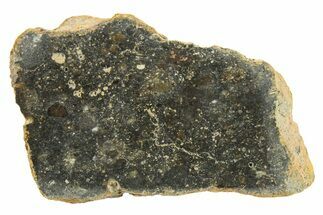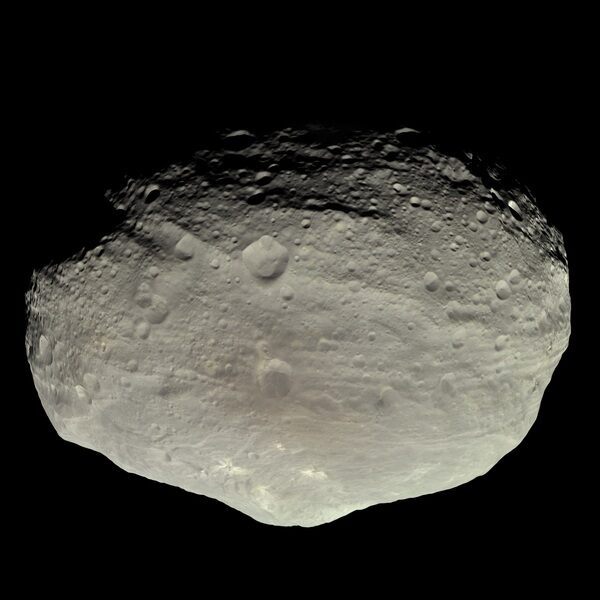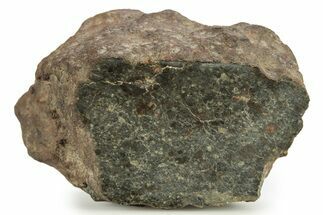This Specimen has been sold.
1.57" Howardite Meteorite (4.2 g) Slice - NWA 12227
This is a 1.57" wide (4.2 gram) slice of the Howardite meteorite NWA 12227. This stunning slice shows off some fantastic inclusions!
It comes with a small floating frame case.
It comes with a small floating frame case.
Howardite - Fragments Of The 4 Vesta Minor Planet
Howardite is the name given to a type of achondritic meteorite that originated from the giant asteroid (or minor planet) 4 Vesta, the second-largest object in the asteroid belt. They were ejected from its surface during impacts from smaller asteroids. How many people know there is a minor planet called 4 Vesta in our solar system, let alone that pieces of it have landed on Earth? It is one of just seven bodies in the solar system of which humans have physical samples.
4 Vesta, or simply Vesta, is the second-largest object in the asteroid belt, with a mean diameter of about 525 kilometers, or 326 miles, and an elliptical shape. It is so large it is classified as a minor planet, falling just short of the dwarf planet designation. Vesta is likely the remnant of a destroyed planet, since it still retains a differentiated interior, just like the layers of Earth and other rocky planets. It is also the brightest asteroid visible from Earth, and can be seen with the naked eye.
Howardites themselves have numerous unique characteristics that make them stand out from other meteorites. They are a eucrite and diogenite-rich regolith breccia, although carbonaceous chondrules and impact melt can also occur. Like other brecciated achondrites, the rock formed from impact ejecta, but howardites were buried by newer impacts and lithified due to the pressure from overlying layers, and ejected again with a later impact. Regolith breccias are not found on Earth: bodies with atmospheres do not produce them. Thus, they are some of the most important materials for studying the makeup of Vesta and other asteroids in the Asteroid Belt.
Howardite is the name given to a type of achondritic meteorite that originated from the giant asteroid (or minor planet) 4 Vesta, the second-largest object in the asteroid belt. They were ejected from its surface during impacts from smaller asteroids. How many people know there is a minor planet called 4 Vesta in our solar system, let alone that pieces of it have landed on Earth? It is one of just seven bodies in the solar system of which humans have physical samples.
4 Vesta, or simply Vesta, is the second-largest object in the asteroid belt, with a mean diameter of about 525 kilometers, or 326 miles, and an elliptical shape. It is so large it is classified as a minor planet, falling just short of the dwarf planet designation. Vesta is likely the remnant of a destroyed planet, since it still retains a differentiated interior, just like the layers of Earth and other rocky planets. It is also the brightest asteroid visible from Earth, and can be seen with the naked eye.
Howardites themselves have numerous unique characteristics that make them stand out from other meteorites. They are a eucrite and diogenite-rich regolith breccia, although carbonaceous chondrules and impact melt can also occur. Like other brecciated achondrites, the rock formed from impact ejecta, but howardites were buried by newer impacts and lithified due to the pressure from overlying layers, and ejected again with a later impact. Regolith breccias are not found on Earth: bodies with atmospheres do not produce them. Thus, they are some of the most important materials for studying the makeup of Vesta and other asteroids in the Asteroid Belt.
TYPE
Achondrite (Howardite)
LOCATION
Algeria
SIZE
1.57 x 1.28", .08" thick, 4.2 grams
CATEGORY
SUB CATEGORY
ITEM
#266105
 Reviews
Reviews













